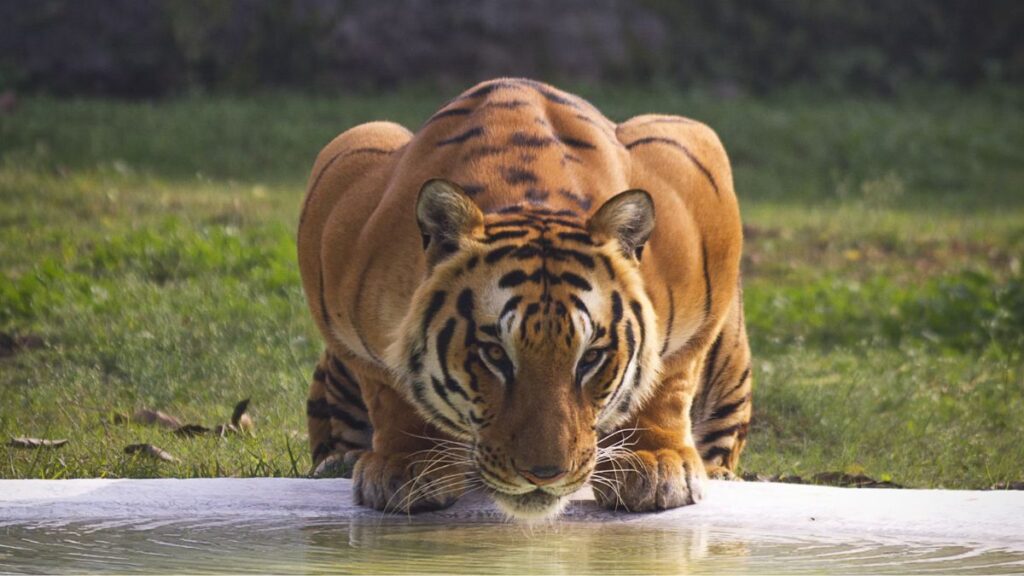How to Maximize Chances of Tiger Sighting in Jim Corbett National Park – What Experts Say

Image credit: Unsplash
Jim Corbett National Park, one of India’s oldest and most revered wildlife sanctuaries, is a haven for Bengal tigers and a dream destination for wildlife enthusiasts and photographers. Known for its rich biodiversity, the park offers an unparalleled opportunity to witness the majestic Royal Bengal tiger in its natural habitat. However, spotting these elusive predators requires more than just luck. With careful planning, expert guidance, and a bit of patience, you can significantly increase your chances of a memorable tiger sighting.
When to Visit: Timing Your Safari for Success
The timing of your visit plays a crucial role in determining your likelihood of spotting a tiger.
- Winter (November to February): While the park is lush and green during this season, tiger sightings can be less frequent. The dense vegetation provides ample hiding spots for the big cats, making them harder to spot. However, the cool weather and serene environment make it a pleasant time to explore the park.
- Summer (March to June): This is the prime season for tiger sightings. As water sources shrink, tigers are often seen near rivers and waterholes. The sparse vegetation also improves visibility, making it easier to spot wildlife.
- Monsoon (July to October): Due to safety concerns, many zones of the park remain closed during the monsoon. Safaris are unavailable, making this season less ideal for wildlife enthusiasts.
Where to Go: Key Zones for Tiger Spotting
Jim Corbett National Park is divided into several zones, each offering unique opportunities for tiger sightings.
- Dhikala Zone: Known for its breathtaking landscapes and abundant wildlife, Dhikala is a hotspot for tiger sightings. The zone also features a historic rest house, allowing visitors to stay overnight and immerse themselves in the jungle experience.
- Bijrani Zone: With its mix of grasslands, Sal forests, and streams, Bijrani is another excellent zone for tiger spotting. Its proximity to Ramnagar makes it a convenient choice for many visitors.
- Jhirna Zone: Accessible via the Dhela gate, Jhirna is home to a variety of wildlife, including tigers, leopards, and elephants. It’s a year-round destination, making it a popular choice for safaris.
- Dhela Zone: Open throughout the year, Dhela is a haven for wildlife enthusiasts. Apart from tigers, visitors can spot leopards, elephants, and even the elusive King cobra.
Jeep vs. Canter Safaris: Choosing the Right Experience
When booking your safari, it’s essential to consider the type of vehicle that best suits your needs.
- Jeep Safari: Ideal for small groups of up to six people, Jeep safaris offer a more intimate and flexible experience. These 4×4 vehicles can navigate narrow trails and dense forest areas, increasing your chances of spotting tigers. Photographers often prefer Jeep safaris for better positioning and unobstructed views.
- Canter Safari: Designed for larger groups, Canter safaris accommodate up to 16 people. These open vehicles are perfect for exploring the expansive Dhikala zone. While less flexible than Jeeps, Canter safaris are more economical and offer a shared, interactive experience.
Wildlife Etiquette: Ensuring a Safe and Respectful Safari
Respecting the park’s rules and wildlife is essential for a successful and ethical safari.
- Dos:
- Maintain silence to avoid startling animals.
- Follow your guide’s instructions at all times.
- Keep your camera and binoculars ready but use them discreetly.
- Don’ts:
- Avoid loud noises or sudden movements.
- Do not litter or feed the animals.
- Never attempt to get out of the vehicle.
Final Thoughts
A visit to Jim Corbett National Park is more than just a safari; it’s an opportunity to connect with nature and witness one of the world’s most magnificent creatures in its natural habitat. By planning your trip carefully, choosing the right zone and safari type, and adhering to wildlife etiquette, you can maximize your chances of a thrilling tiger sighting.
Article based on research, secondary sources, wildlife websites and first hand accounts of forest guides.







